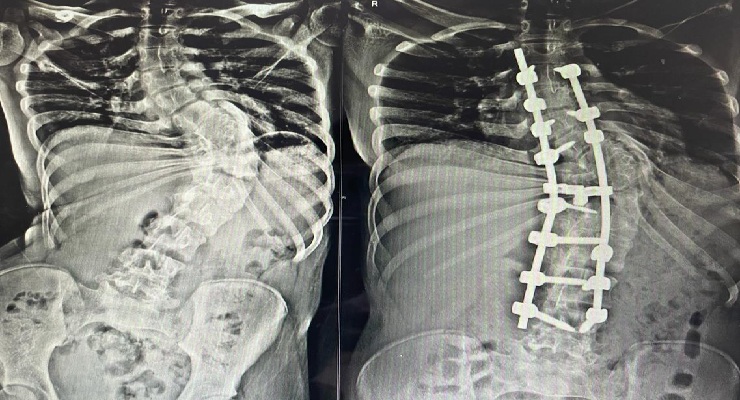
Scoliosis and kyphosis are spinal deformities characterized by abnormal curvature of the spine. Scoliosis involves a lateral (sideways) curvature, while kyphosis involves an excessive forward curvature of the spine. Surgery may be recommended for severe cases of scoliosis or kyphosis that cause pain, spinal instability, or cosmetic concerns and have not responded to conservative treatments.
Indications:
Dr. Phani Kiran S, specialist in Scoliosis and kyphosis Correction Surgery at Medspine in Chennai, with more than 10 years of experience, offers expert care and personalized treatment plans to address these conditions effectively.
The surgeon uses bone grafts and metal instrumentation such as rods, screws, and hooks to stabilize the spine and correct the curvature. The curvature is corrected by straightening the spine and securing it in the corrected position.
Anterior spinal fusion may be used alone or in combination with posterior fusion to achieve correction in certain cases of scoliosis, particularly when the curvature is more pronounced in the thoracic region.
Posterior spinal fusion may be recommended for severe kyphosis with a curvature greater than 50 degrees, particularly if it is causing pain, neurological symptoms, or cosmetic deformity.
Osteotomy involves making cuts in the vertebrae to release tension and allow for correction of the curvature. The surgeon then stabilizes the spine with instrumentation and bone grafts. Osteotomy may be considered when the kyphotic curve is rigid and resistant to correction with fusion alone.
It is a surgical intervention specifically for treating disc herniations in the lower back (lumbar region). Surgeons use an endoscope to remove portions of the herniated disc that are causing pain and other symptoms by exerting pressure on nerve roots.
It is similar in purpose to endoscopic lumbar discectomy, focuses on the treatment of herniated discs. However, it involves specialized microsurgical techniques and instruments in addition to the endoscope.
Endoscopic Cervical Discectomy targets disc herniations in the neck (cervical region). Surgeons remove the herniated parts of a cervical disc that are compressing the spinal cord or nerve roots.
The Ortho Clinic: Monday, Wednesday, Friday, Saturday.
Ojas Health: Tuesday, Thursday
© Copyright 2024 MedSpine. All Rights Reserved. Build with 🤍 by Digital GYB
WhatsApp us